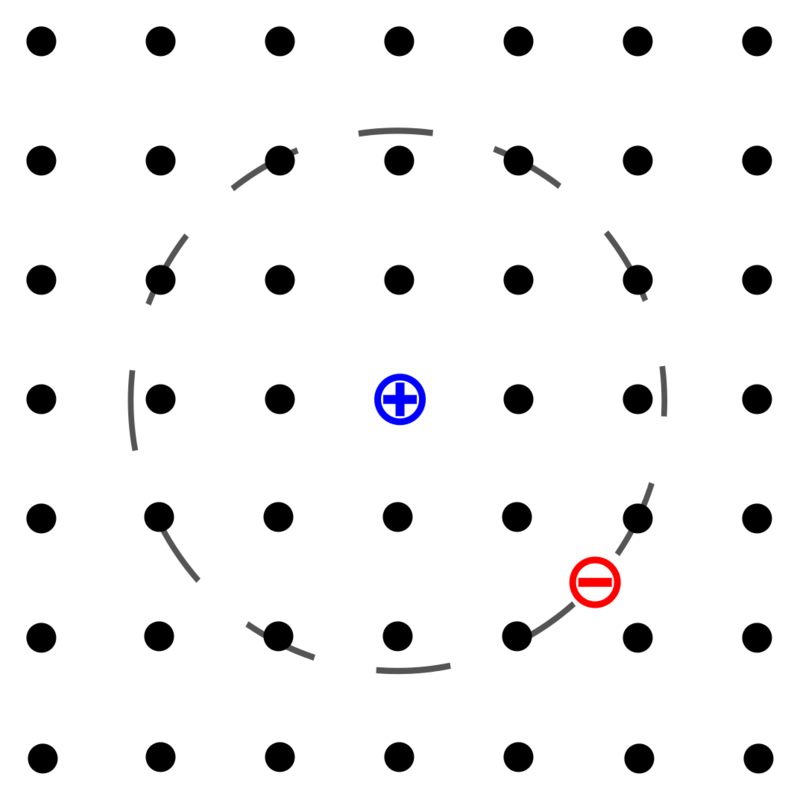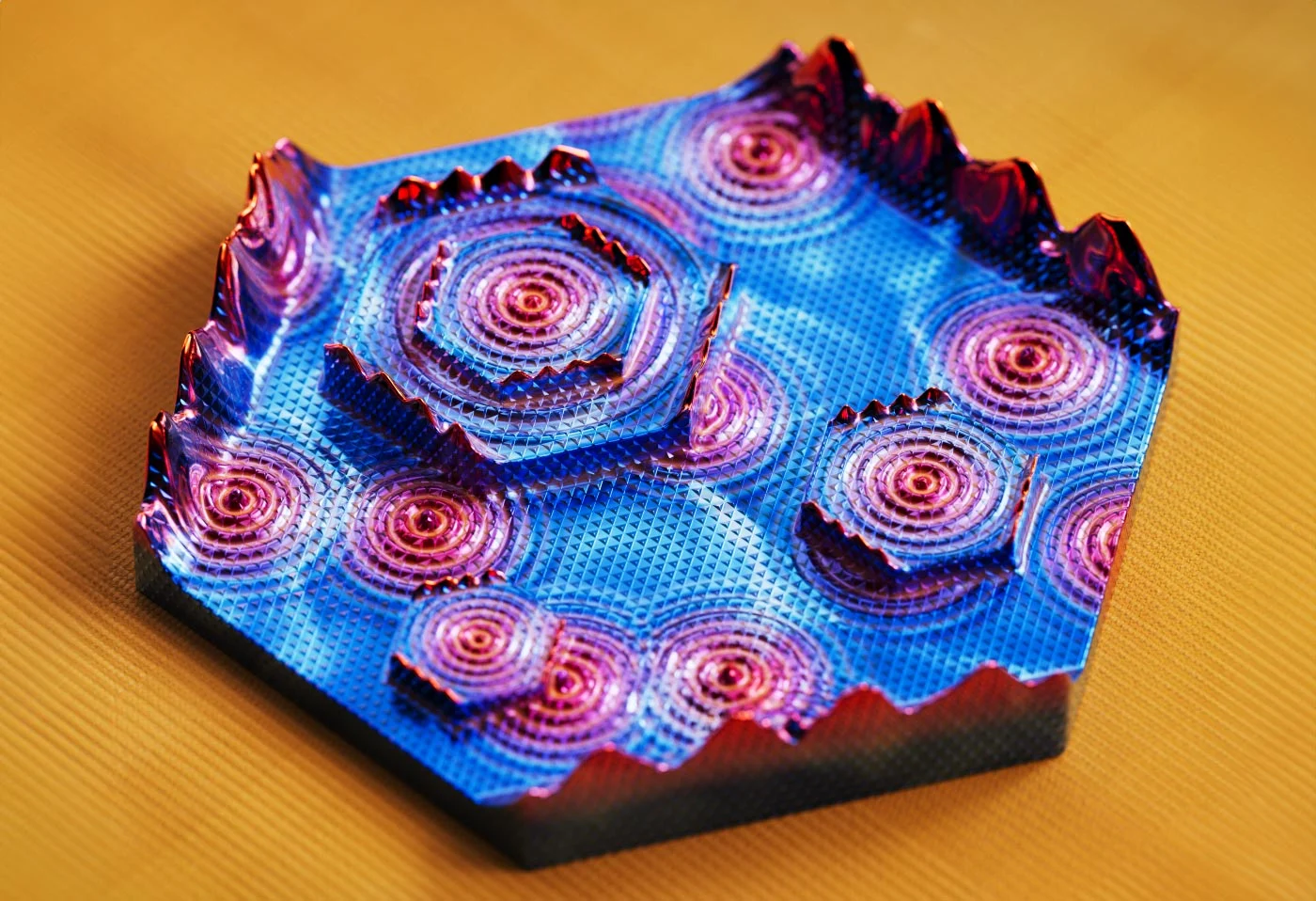A dark matter particle or weakly interacting massive particle WIMP may follow all particles. And there is the possibility that those particles are lighter versions of the Kubelblitz black holes. In this text, I call the WIMP the Kugelblitz structure. The Kulgelblitz structure is a lighter version of the Kugelblitz black holes. Those hypothetical Kugelblitz black holes can be those quantum-size black holes. The lifetime of those particles could be less than a second before they vaporize. And that could connect WIMPs to those structures.
Dark energy is wave movement that the source is unknown. So could that source be the quantum-size Kugelblitz black hole? The same phenomenon that creates the Kugelblitz black holes can create lighter structures. We can call as kugelblitz-structures. The quantum-size black holes can form a quasiparticle called super exciton.
Exciton is the situation where an electron starts to orbit an electron-hole. If an electron can start to orbit the quantum-size black hole it can make a stable exciton. It's also possible that the fast-spinning particle turns into a donut-shaped structure. And if there is a quantum-size black hole in the middle of that structure the energy flow from outside can stabilize this particle.
The WIMP can be a double particle. If the particle's spin is fast enough, it can turn into a ring. And there could be the quantum-size Kugelblitz black hole in that ring.
The hypothetical dark matter particle is called WIMP. Or Kugelblitz's structure can be an extremely high-energy particle. That will push all wave movement from around it. Radiation slides over the particle without causing reflection. And that makes particles act like stealth aircraft. Without reflection that particle is invisible.
"Frenkel exciton, bound electron-hole pair where the hole is localized at a position in the crystal represented by black dots" (Wikipedia,Exciton)
The quantum-size black holes can form the stable quasiparticle called "super exciton".
The fast-spinning particle can turn into the ring, that is invisible to the observer. And maybe that ring-shaped object can trap the quantum-size Kugelblitz black holes in that particle. The energy that comes from that ring stabilizes the Kugelblitz structure.
When particle travels in the universe. There is a quantum low-pressure channel behind it. That quantum low-pressure channel slows particles because it pulls them from behind. But there could be the small quasiparticle called a Kugelblitz black hole or Kugelblitz structure behind that particle.
There may be a small kugelblitz-black hole following the photon. In physics, the kugelblitz-black hole is a black hole that forms straight from the wave movement. It's possible. The particles can form lighter quantum structures from the wave movement, and that's why we can call that hypothetical structure a "Kugleblitz structure". That structure is the knot of quantum strings.
If we think the photon has no measured mass. That kind of quantum structure behind the photon can explain why it doesn't have mass, and why the photon's speed is the top in the universe. The quantum structure that can follow a photon is maybe not a black hole, but it's like some kind of quantum knot. When a photon travels in the universe, it forms an electromagnetic tunnel in the quantum field.
If those quantum fields connect between photon and that "Kugelblitz"-structure. That can also explain why photon travels forever. The quantum electric arc between that quantum structure and the photon can push the particle ahead. And if that thing turns too high energy, it will increase the mass of that "kugelblitz-structure". That mass pulls photons back, and that thing denies the photon's ability to cross a speed of light.
That small kugelblitz-structure or Kugelblitz black hole can also explain why other particles cannot reach the speed of photons. The bigger particles form the bigger holes in the quantum fields. And that thing makes bigger and heavier Kugelblitz structures behind them. This thing pulls those particles backward strongly.
There is the possibility that the electromagnetic low-pressure channel also pulls particles back. The thing that makes this thing break the cosmic speed limit is just to fill that quantum channel. If there is no channel, energy will not travel as fast out from that particle. The quantum channel behind particles is another thing that could make the cosmic speed limit.
The question is: does the thing that removes mass from photons explain dark matter? And maybe the same thing can also explain dark energy. Photon is the particle. And it also has wave movement form. If the photon is stretched superstring like all other particles, that particle should have a mass.
There is a model that when a photon travels in the universe, it creates a hole in the quantum field. Energy or wave movement travels around the photon as it travels around aircraft. If there is a small quantum low pressure behind the photon. The Quantum field falls in that vacuum. The photon forms also a small whirl, like aircraft forms, when it travels through the air.
https://bigthink.com/starts-with-a-bang/photons-mass-dark-matter/
https://en.wikipedia.org/wiki/Dark_energy
https://en.wikipedia.org/wiki/Dark_matter
https://en.wikipedia.org/wiki/Exciton
https://en.wikipedia.org/wiki/Kugelblitz_(astrophysics)
https://en.wikipedia.org/wiki/Weakly_interacting_massive_particle
https://en.wikipedia.org/wiki/Quasiparticle
















